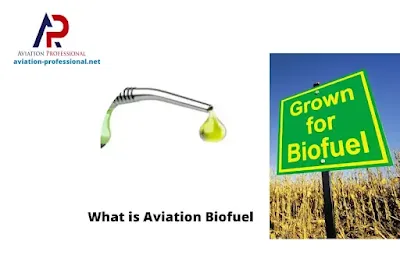Biofuel aviation is safe, reliable, low-carbon biofuel used by the aviation industry to describe a non-conventional (fossil-derived) aviation fuel. It has many other terms such as sustainable alternative fuel, sustainable alternative jet fuel, renewable jet fuel, or biofuel aviation is used, with the same intent.
It is produced from biological resources (plant or animal material) and used to power aircraft with similar properties to conventional jet fuel but with a smaller carbon footprint.
Depending on the feedstock and technologies used to produce it, biofuel aviation has the potential to provide a lifecycle carbon reduction of up to 80% compared to the traditional jet fuel it replaces.
The Work of ICAO on Biofuel Aviation
The 38th Session of the ICAO Assembly recognized the many actions that the ICAO Member States have taken and intend to take in support of the achievement of the collective aspirational goals, including the development and deployment of sustainable alternative fuels, and encouraged further such efforts (Resolution A38-18, paragraph 8).
The Three Key Elements of Biofuel Aviation
It consists of three key elements:
1- Sustainable
It can be continually and repeatedly resourced in a manner consistent with economic, social, and environmental factors and conserves an ecological balance by avoiding the depletion of natural resources.
2- Alternative feedstock to crude oil
It is a fuel for aviation with an alternative feedstock (raw material from which fuels are produced) to crude oil.
For example, in the USA it is estimated that one billion dry tons of biomass can be collected each year, enough to produce 50–60 billion gallons of low-carbon biofuels. These resources include:
- Algae
- Agricultural residues
- Corn grain
- Dedicated energy crops.
- Forestry residues
- Oilseeds
- Other fats, oils, and greases
- Municipal solid waste streams
- Wood mill waste
- Wet wastes (manures, wastewater treatment sludge).
This vast resource contains enough feedstock to meet the projected fuel demand of the U.S. aviation industry. (Reference: Energy.Gov)
For example, sustainable aviation fuel companies such as Air BP currently produce sustainable aviation fuel from used cooking oil and animal waste fat.
3- Fuel
It means jet fuel that meets the technical and certification requirements for use in commercial aircraft.
Biofuel chemical and physical characteristics
The chemical and physical characteristics of alternative aviation fuels are almost identical to those of conventional jet fuel, they can safely be mixed with traditional jet fuel to varying degrees, use the same supply infrastructure, and do not require the adaptation of aircraft or engines. Fuels with these properties are called “drop-in fuels” (i.e., fuels can automatically be incorporated into existing airport fueling systems). It is safe to do so by certified fuel producers without endangering aviation safety.
Alternative Aviation Fuels Improve Aircraft Performance
Many biofuels in aviation contain fewer aromatic components, which enables them to burn cleaner in aircraft engines. It means lower local emissions of harmful compounds around airports during take-off and landing. Aromatic components are also precursors to contrails, which can exacerbate the impacts of climate change.
Do you know!
Airbus was the first manufacturer to offer its customers the option of using a blend of sustainable fuel when newly-delivered aircraft depart the final assembly lines for the trip to their home bases. Many airline customers have benefited from this programme, developed in association with Air Total, and Airbus also is heavily involved in the ITAKA European initiative to speed up overall commercialisation of sustainable aviation fuel in Europe.
Cost of biofuel aviation compare to traditional jet fuel
Biofuel aviation is currently more costly than traditional fossil jet fuel. That’s down to a combination of the current availability of sustainable feedstocks and the continuing development of new production technologies. As the technology matures, it will become more efficient and so the expectation is that it will become less costly for customers.
Acceptance and deployment of biofuel aviation
The key to greater acceptance and deployment of SAF fuel is that it will help reduce aircraft operating costs. Over the long term, that will require investment in advanced technologies to process feedstocks more efficiently on a large scale and investment in the development of sustainable and scalable feedstock options.
However, in the short-term interim support from governments and other stakeholders through policy incentives is needed. This support needs to be part of a long-term framework to give investors the confidence to make investments required to grow supply.
Sustainable aviation fuel means sustainable aircraft operations.
